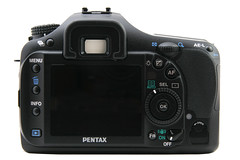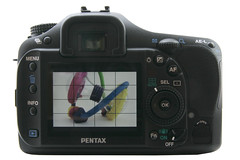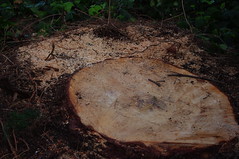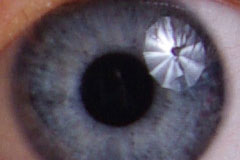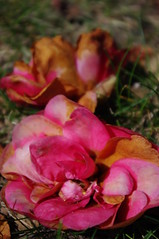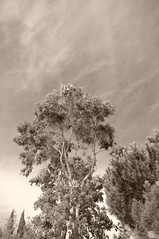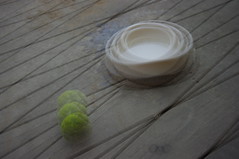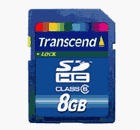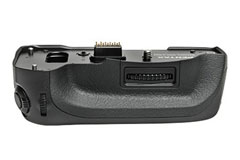Pentax K20D Guide |
Page updated: April 2008 |
|
I was originally expecting to write this Pentax K20D guide much later in the year. The original release date for the camera (according to the Pentax press releases) was set for May of 2008. By some quirk of digital SLR manufacturing, the camera became available in early March, which is great news for all you Pentax digital SLR enthusiasts. The Pentax K20D builds on top of the features available in the popular K10D, and includes a superlative (something all digital SLR manufacturers look for in their new cameras). At the time of its release, the Pentax K20D features the most megapixels (14.6) of any other digital SLR in its class. Yes, there are other digital SLRs with more megapixels, but they are cameras for pro photographers and cost in excess of $3,000 for the camera body alone. The extra megapixels are both boon and bane: while you're able to make exceptional quality prints at huge sizes (12x18 inches, if you like), the large file sizes generated by a high-megapixel sensor are going to eat up both memory card and hard drive space. I'll talk in greater depth about those space requirements later on in this Pentax K20D guide. |
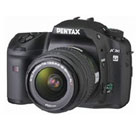 |
Ultimately, file size and memory requirements may be inconsequential for those who want the best that Pentax has to offer: the K20D comes packed with features in addition to its high megapixel sensor, and is a great option for the experienced photographer who's already made an investment in Pentax SLR lenses.
Quick Overview
- 14.6 megapixel sensor - for high-quality 20x30 inch prints
- Compatible with every Pentax lens (some require an adaptor)
- 3 photos per second
- ISO settings from 100 to 6400
- Maximum shutter speed of 1/8000th of a second
- 1.5 times crop factor
- Stores photos on SD memory cards
- 11-point autofocus system
- Dust control system
- Built-in image stabilization
- 2.7" live view LCD
- Extended dynamic range
- Weather sealing
Key Feature
The Pentax K20D doesn't have one single feature that really sets it apart from other competing cameras. Instead, it's the package as a whole that places this camera into its own unique category.
I've already talked about the huge number of megapixels, but the K20D also sneaks in a few extras that are worth paying attention to.
- Live View LCD - the K20D is the only Pentax digital SLR camera that lets you compose photos with the LCD in addition to the viewfinder
- Weater Sealing - rather than rubber, the parts of the K20D that open (battery door, memory card door, etc.) are made of plastic and seal tightly which is great for anyone who photographs in the rain, heavy fog, or in sandy/dusty conditions
- Built-in Image Stabilization - while many competing SLRs have this feature, what's notable on the K20D is that it works with any old Pentax lens (other systems only work with modern lenses)
As if this weren't enough, the K20D also includes some very interesting features that are fairly unique (very few other SLRs share these features and none share all of them) :
- Flash Sync Port - this allows you to easily connect the K20D to more professional flash units for more dynamic lighting
- Burst Mode - in this mode you can capture 21 frames per second (as close to video as you're going to get with a DSLR)
- Multiple Exposures - you can set the camera to layer different exposures all into one shot
- Interval Timer - this lets you set the camera to any number of photos at specific time intervals (i.e. 1 second, 1 minute, 1 hour, etc.)
I'll go into a lot more depth about each one of these features later on in this Pentax K20D Guide.
For now, let's just say that the K20D comes packed with a wide variety of features and options, making it a versatile camera for a lot of different photographic opportunities.
But does it excel at one type of photography? It sure does.
Who The Pentax K20D is For
While the sheer number of features available on the Pentax K20D make it well suited for a variety of photographic applications, I think that this camera will work especially well for portrait photographers.
There are a couple of reasons why:
- The massive image size provides you with flexiblity when cropping
- The built-in image stabilization works best with non-moving subjects
- The PC sync connector allows you to plug the camera into off-camera lights
- Flexible color modes give you complete control over how skin tones are reproduced
Let's discuss each one of these in turn.
Image Cropping
First up, there's the fact that the K20D captures photos at 14.6 megapixels.
If you take the images as they are and don't edit them one tiny bit, you'll be able to make enormous 20 x 30 inch prints.
But let's say that you grab a quick shot of a portrait subject and don't have the time to zoom in so that the subject fills the image.
Later on, you crop out the distracting parts of the photo so that the focus is on your primary subject. Here's the fun part: you can crop out 50% of the image and you'll still be working with a 7 megapixel file, which will allow you to make high-quality prints at 11 x 14 inches.
Image Stabilization (IS)
While built-in IS systems are great, they're not invincible: they can't prevent image blur that occurs when you use a slow shutter speed in conjunction with a fast moving subject.
Since this is the case. IS systems are most effective at taking clear photos of subjects that aren't moving.
Unless you are taking portraits of small children (who never sit still) you're going to be able to leverage the full power of the IS system if you can tell your portrait subject to hold still while you take the shot.
This should allow you to take great portrait shots even when the light is dim and you're forced to use a slow shutter speed.
PC Sync
A PC sync connector is a small socket that lets you plug a PC sync cord into the camera (it's the small silver circle in the photo to the right).
The other end of the cord can be connected to small external flash units or to professional studio strobe lights, and this will allow you to take your flash portrait photography to the next level.
It's a relatively inexpensive way to make the jump into off-camera flash, since the alternative is an investment in a wireless flash trigger system.
Example: a standard PC sync cord will run you about $20, while a wireless flash setup can cost closer to $360.
Color Modes
While the Pentax K20D offers color modes that are quite common on digital SLRs - normal, bright, vivid, etc. - this camera really allows you to tweak each color setting for maximum impact.
Adjustments can be made to the saturation (color intensity), hue (color tone), contrast and sharpness, and each one offers 9 different levels of customization.
Furthermore, you're able to preview the results of your adjustments on the camera's LCD.
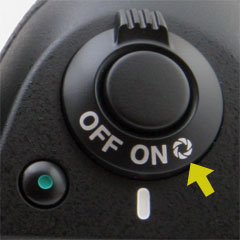
When you set the camera to image preview mode (indicated by the arrow) the camera takes a snapshot of the subject in front of you, but doesn't save it to the memory card.
As you adjust the color and contrast settings, you see a real-time preview of the impact that these changes will have on your subject.
With this approach, you can make all the color tweaks you want before you go and take 100 photos that don't quite have the color or intensity you were hoping for.
Don't fancy yourself a portrait photographer? The K20D is also very well-suited for photographers with a creative streak, and I'll explain why in detail a little bit later on in this Pentax K20D Guide.
In Comparison
Pentax K20D vs. K10D
The K20D replaces the highly regarded and well-reviewed K10D, so the immediate question is: what makes it so much better?
Let's take a quick comparative glance at the features available on each camera:
| K20D | K10D | |
| Release Date | March 2008 | November 2006 |
| Megapixels | 14.6 | 10.2 |
| Max FPS | 3 | 3 |
| AF Points | 11 | 11 |
| ISO | 100 - 6400 | 100 - 1600 |
| Max Shutter Speed | 1/4000 | 1/4000 |
| LCD Size | 2.7 in. | 2.5 in. |
| Dust Control | ||
| Built-in Stabilization | ||
| Live View | ||
| Dynamic Range Control | ||
| Flash Sync Port | ||
| Dimensions | 5.8x 4.3x2.9in 146x108x74mm | 5.6x4.0x2.8in 141.5x101x70mm |
| Weight | 29oz (822g) | 28oz (790g) |
| Price | $ 1,380 | $ 650 |
As you can see, these two Pentax digital SLRs are quite similar in many respects.
The key improvements that the K20D offers over the K10D are: more megapixels, more ISO range, a slightly larger LCD, live view mode and the PC sync port.
In short:
- If you want the latest and greatest Pentax has to offer then pick up a K20D
- If you're not keen on spending over $1,000 on a digital camera, then hunt around for the K10D - its layout and features are almost equivalent
Pentax K20D vs. Other Manufacturers
The closest camera that I can compare to the Pentax K20D is the comparably priced Canon EOS 40D.
Both share a lot of features in common, although with the Canon 40D the image stabilization isn't built into the camera body. Instead, it's available in special image-stabilized Canon lenses.
Otherwise these two share a lot: dust control, live view, PC sync ports and plenty of ways to customize how the camera captures images.
But there is one whopping difference: speed.
The Canon 40D performs considerably faster, in two ways: the autofocus sytems locks in faster on subjects, even when they are moving at high speed, and the 6.5 photo per second capture rate is more than twice as fast as the 3 photo per second rate on the K20D.
This makes the Canon 40D a better candidate for those who want to take a LOT of action photos or photos where the subject is in constant motion.
If your photographic passion leans more toward the static than the speedy, then the Pentax K20D should be on your list of cameras to consider, especially if you want to make ultra-large prints of your photos (since the Pentax K20D sensor beats out the Canon 40D by about 4 megapixels).
And if you happen to have a lot of old Pentax lenses lying about, then the clear choice is the K20D, for two reasons:
- The stabilization system will work with your old lenses
- You don't have to spend a ton of money on new lenses for your SLR
How It Works
In Use
One drawback to the K20D is that it's not exactly intuitive to operate, and you have to do a bit of digging to "unlock" all of the camera's potential.
This is one of the first digital SLRs where I've had to read through the entire operating manual in order to figure out how to adjust settings like ISO and white balance.
Please keep in mind that this is mostly due to my unfamiliarity with the layout of the new breed of Pentax digital SLRs. Anyone who has used a K10D won't have any problem at all operating the K20D.
Now that I know how the camera ticks, I am able to change settings on the fly and let me say that there are PLENTY of settings to choose from.
Unlike some of the other "entry-level" digital SLRs, the K20D is set up to give you precise control and tons of creative options when capturing images. It will take some time to learn them all, but once you do, you'll be able to capture images in-camera (without the need for photo editing software) that simply aren't possible with other cameras.
Weather Sealing
Let's be clear: weather sealing is not the same thing as weather PROOFING.
You won't want to submerge the K20D underwater or let your kid bury it in the sandbox.
But you can take photos comfortably in rain, dense fog or at the beach without having to babysit the camera.
You can immediately tell the difference between the weather-sealed camera body and other SLRs without it: all of the access doors on the K20D are made out of a hard plastic (other cameras use rubber) and when they close, they snap tight.
Both the memory card compartment and the battery compartment go an extra step: in order to open them, you need to lift a small lever and twist it. This action "pops" open the door: a small difference from other cameras, but more satisfying than trying to pry it open with a fingernail.
Do you really need weather sealing?
That depends a lot on where you live and/or where you want to take photos.
Anyone working in a studio environment clearly won't benefit all that much from it — but those who live where the weather is wild and want to take photos in the great outdoors can feel confident taking photos with their SLR while others hide their cameras away to protect them.
Controls and Operation
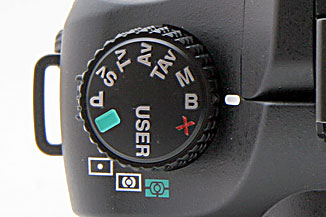
One thing became immediately clear to me while using the Pentax K20D for this guide: this is NOT a beginner's camera.
The K20D features more custom controls and settings than many other digital SLRs that I've used.
While this is all quite wonderful for the experienced photographer who knows how to leverage them, it can be daunting and intimidating for a beginner to figure it all out.
Case in point — most SLRs include 5 main photography modes: AUTO, Program, Shutter Priority, Aperture Priority, Manual.
By contrast the K20D has 10 photography modes: AUTO, Program, Sensitivity Priority, Shutter Priority, Aperture Priority, Shutter and Aperture Priority, Manual, Bulb, Flash Sync, and User-Defined.
Many of these modes revolve around three main camera settings: shutter speed, aperture and ISO.
- Shutter Speed - how long the shutter stays open (measured in fractions of a second). Slow shutter speeds can lead to blurry photos
- Aperture - how wide the lens opens up (measured in f-stops). Wide apertures are better for low-light conditions while narrow apertures are suitable when there's plenty of light
- ISO - how much light the sensor absorbs. A higher ISO number means the sensor is more sensitive and is able to absorb more light in less time
These three camera settings all balance with each other to create a good exposure - one that is neither too dark nor too bright.
The mode you choose on the Pentax K20D determines the level of control that you're going to have over one or more of these features. In some modes, the camera will be determining the right setting for you, while in others you can select it yourself.
| MODE | INDICATOR | DESCRIPTION |
| AUTO | Green Rectangle | The camera sets shutter speed, aperture and ISO for you |
| Hyper-program | P | The camera sets shutter speed, aperture and ISO for you, but you can turn the rear command dial to instantly switch to Aperture Priority mode or the front command dial to switch to Shutter Priority mode |
| Sensitivity Priority | Sv | You set the ISO, the camera sets shutter speed and aperture |
| Shutter Priority | Tv | You set the shutter speed, the camera sets aperture and ISO |
| Aperture Priority | Av | You set the aperture, the camera sets shutter speed and ISO |
| Shutter and Aperture Priority | TAv | You set both shutter speed and aperture, the camera sets the ISO |
| Manual | M | You set shutter speed, aperture and ISO yourself |
| Bulb | B | You set aperture and ISO, shutter speed duration is determined by how long you hold down the button |
| Flash Sync | X | Shutter speed is locked at 1/180th of a second, you set aperture and ISO |
| User Defined | USER | Your favorite camera settings can be stored in this custom mode |
As you can see, many of the modes are designed to give you manual control over one or more of the three main settings.
In fact, the Pentax K20D is fairly unique in the ways that it allows you to modify the ISO setting. While other cameras just provide you with an ISO button and let you figure out which setting is the best, the K20D provides multiple ways to set this value manually, and several automatic modes where you specify the ISO range you want the camera to use.
- In all of the manual modes except for Sensitivity Priority, you can manually set the ISO by pressing the Function (Fn) button on the back of the camera
- In Sensitivity Priority mode, you manually set the ISO using the rear control dial, and the camera figures out the other settings required for a balanced exposure
- In Shutter and Aperture Priority mode, you select the shutter speed and aperture you want to use, and the camera automatically picks a good ISO
All of the AUTO ISO settings would be harder to figure out if you couldn't set an ISO range for the camera to use, but with the K20D you can:
- Press the Fn button
- Press the right directional arrow to select the ISO setting
- Set the ISO to AUTO
- Turn the front control dial to set the MINIMUM ISO the camera will use
- Turn the rear control dial to set the MAXIMUM ISO the camera will use
In this sense, you can set the AUTO sensitivity of the camera to range between ISO 100 and 400 or even ISO 800 to 6400 (if you so desire).
Of course, this assumes that you'll want to have this level of control over ISO, aperture and shutter speed.
If you don't have a good command of these controls and really never want to, then the K20D has a ton of modes and features that you'll simply never use.
Save yourself the money and spring for a K200D instead.
Live View
The live view mode was the one feature that I was most interested in testing for this Pentax K20D guide.
The reason is simple: the K20D is the only Pentax digital SLR (as of March 2008) to include a live view LCD.
Having used it I now say this: it's great for closeup, still-life and portrait photography but not much good for moving subjects.
The problem here is speed (a common problem with a lot of SLR live view systems and not unique to the Pentax K20D).
When you look through the viewfinder of a digital SLR camera, you're seeing an image that's reflected by a mirror inside the camera body. This mirror sits smack in front of the camera's sensor, and it's the sensor that's required to capture a live view image.
In order for live view to work, the mirror must lift up out of the way of the sensor.
And here's where we run into trouble: the camera's sophisticated autofocus system needs to have that mirror DOWN in order to work.
So every time you try to autofocus in live view mode, the mirror snaps down, the autofocus engages, locks, then the mirror snaps up again. This is a time-consuming process, and not very effective when you're dealing with a moving subject.
Case in point: I tried photographing my kids a lot with the live view mode and ultimately had to give up. They simply would not sit still long enough for me to set the autofocus and then take a picture.
However, the stepping stone in the following sample photo was quite cooperative.
ISO Performance
In the previous section on camera controls, I note that the K20D is a unique camera because of the sheer number of ways you can adjust the ISO setting.
But whether you're setting the ISO yourself or having the camera do it for you, a question arises: how well does the camera handle noise at high ISO settings?
Image noise appears as grain or speckling in your digital photos. Smooth surfaces actually look smooth when there is little noise, but they take on a mottled appearance when the noise levels are high.
One way to find out how a digital SLR camera handles noise is to take a sequence of images from a low ISO value to a high one and inspect them to see when noise becomes a noticeable part of the photo.
The K20D keeps ISO noise to a minimum, and it only became apparent - and affected image quality - right around ISO 800.
Being able to capture high-quality images between ISO 100 and 800 gives you a lot of flexibility when working in low light conditions. Paired with the built-in image stabilization system, this camera is a good option for low-light hand-held photography.
Exposure
I don't typically talk a lot about exposure in my digital SLR camera guides, since most modern digital SLRs are quite accurate about their automatic exposure settings.
One issue I have with the K20D is the fact that its default exposure setting universally under-exposes the image.
This is especially evident when taking photos in overcast or shaded light.
If you just allow the camera to do what it wants, you're going to wind up with photos that look too dark and might not have the color brightness that you were hoping for from a camera of this caliber.
The solution is an easy one: you just have to change the exposure compensation setting so that the camera thinks the image is over-exposed (when this really just balances things out).
Take the following two sample photos: the first was taken with zero exposure compensation and you can see how dark it turned out. For the second shot, I adjusted the exposure compensation setting to intentionally over-expose the photo, and got much better results.
 |
 |
You just have to keep a close eye on the histogram for each photo you take to make sure that you're getting a decent exposure. Getting the exposure right the moment you take the shot means less time later tweaking the image with software (if you're inclined to tweak it at all).
Image Quality and Size
When you're talking about a camera with a 14.6 megapixel sensor, the issue of image quality is going to come up at some point.
It's no good for an SLR to have a massive sensor if it's not going to capture remarkable images. The verdict: the Pentax K20D delivers in spades in the image quality department.
Images captured by the sensor are clear, bright, and colorful but come with one drawback: the slightest flaws in either your camera technique or your subject become quickly apparent with these huge image files.
You might not notice a blemish or image blur when you look at a reduced-size image, but every imperfection becomes visible when you blow your photos up to 100%.
At its full 14.6 megapixel resolution, the K20D is capturing images that measure 4,672 x 3,104 pixels.
This means you can create high-quality prints on paper that measures 14 x 17 inches (or A2). If you're willing to suffer a slight loss of image quality, you can print even larger than this.
It also means that you can crop aggressively, and still get away with fairly large print sizes.
Take the following two images:
 |
 |
I wasn't overly happy with the framing of the image on the left and I wanted to crop in so that the dog is the primary subject of the photo (as illustrated in the second photo).
Here's the fun part: even though I cut out an awful lot of the original image, the second photo still measures 1297 by 1946, with a total resolution of 2.5 megapixels.
For those in the back of the room without calculators, I can still make a nice 4x6 print from this photo, even though I have cropped out a huge amount.
All of this printing and cropping flexibility does come with a price: the file sizes generated by the Pentax K20D are absolutely enormous.
The following table shows the number of photos you can pack onto an average 2 GigaByte SD Memory Card, showing the impact of JPG file size and quality:
| FILE TYPE | MEGAPIXELS | COMPRESSION | FILE SIZE (MB) | # SHOTS |
| JPG | 14.6 | Premium | 11.65 | 139 |
| Best | 6.40 | 240 | ||
| Better | 3.47 | 432 | ||
| Good | 1.87 | 835 | ||
| 10 | Premium | 6.92 | 207 | |
| Best | 4.49 | 345 | ||
| Better | 2.56 | 605 | ||
| Good | 1.30 | 1,261 | ||
| 6 | Premium | 4.40 | 361 | |
| Best | 2.78 | 583 | ||
| Better | 1.56 | 996 | ||
| Good | 0.88 | 1,872 | ||
| 2 | Premium | 1.68 | 936 | |
| Best | 1.04 | 1,507 | ||
| Better | 0.65 | 2,472 | ||
| Good | 0.38 | 4,414 | ||
| RAW | 14.6 | none | 23.37 | 82 |
You can quickly see that the full-size, high-quality photos captured by the K20D are fairly substantial.
And these huge files aren't just going to have an impact on your memory card capacity. They will also:
- Take a long time to copy from camera to computer
- Take a long time to view and edit with a photo editing program
- Take a long time to upload to a photo sharing site (even with a blazing-fast Internet connection)
While you certainly can set the K20D to capture 6 megapixel files for everyday use, be aware of the impact that the full-size 14.6 megapixel files will have on your memory and computer system (especially since the default setting for the camera is JPG 14.6 megapixel Best).
Color
Every modern digital SLR camera lets you adjust how the camera captures color in two different ways:
- You can select the color capture mode
- You can adjust how each color mode handles saturation, color hue and contrast
While taking photos for this Pentax K20D guide, I found that this particular SLR camera goes a little bit further.
The Pentax K20D offers 5 basic color modes: Bright, Natural, Portrait, Landscape and Vivid. For each mode, the K20D lets you adjust the saturation, hue, contrast and sharpness.
There are two ways that the K20D takes this common setting into slightly more advanced territory:
- The K20D lets you adjust the secondary features at 8 different steps while most other SLRs provide 5
- You can take a preview photograph so that you can see how the color adjustments will affect your images
This second one is an important point, and something that's not offered on every digital SLR model.
With the ability to take a preview image, you don't have to guess about how +2 saturation in landscape mode looks: you can see it right there on the LCD.
Once you dial in the setting you want, then it's saved for every other photo that you take in that color mode.
Black and White (Monochrome)
All of you monochromatic photographers out there are going to have a field day with the K20D.
This camera offers the most extensive range of monochromatic controls I have seen on any other digital SLR, giving you the ability to create some very unique and interesting images in-camera without having to spend a lot of time adjusting your images with software.
In the color modes, you're able to make fine-tuned adjustments to color saturation.
Since there's not color information in the black and white mode, the two main controls available are filters and toning.
With black and white film, you could place a colored filter over the lens to achieve a certain look: red filters darken sky and create dramatic landscapes, while green filters work well for portrait subjects.
The Pentax K20D lets you choose between eight different filters including none, green, yellow, orange, red, magenta, blue, cyan and (my personal favorite) infrared.
This last filter simulates the look of infrared images and - used with the correct subject - can yield some very interesting effects.
The toning control lets you add a color tint to your photos, running the scale from blue to bright orange.
While all this control might seem a bit overwhelming at first, what it ultimately means is that you have a lot of creative options with the K20D.
Photographers who aren't content just to capture the same old images day in and day out will enjoy the creative possibilities buried in the right combination of subject, fitler effect and tone control.
Just like with the color mode, there's no guesswork involved here: you can snap a preview image to view on the LCD as you make your adjustments, so you can see beforehand what results you'll get in the final photo.
Special Features
Once I found out about them (these features are somewhat buried in the user manual) I was quite interested to try out some of the special features of the Pentax K20D for this guide.
The K20D includes three features that are quite rare on digital SLR cameras, and they provide you with plenty of creative freedom and flexibility.
- Burst Mode — in this mode the K20D is able to capture 21 photos per second (although the resolution is reduced to 1.6 megapixels)
- Multiple Exposures — you can set the K20D to take 2 to 5 separate images and layer them all together into a single exposure
- Interval Timer — the K20D can take any number of sequential photos based on your choice of time interval (also called time-lapse photography)
Simply put, the burst mode on the K20D is the closest thing you're going to get to full-motion video capture in a digital SLR.
No other digital SLR camera lets you capture video in addition to still photos - it's one of the limitations of SLR cameras when compared to their compact cousins.
The most notable issue with burst mode is the sheer number of files it creates: over 60 separate still photos in 3 seconds. You then have to use software to stitch the images together into a "movie" but the results can be pretty interesting.
The multiple exposure mode is for exploring your creative side, since you can create an infinite number of layered images using this feature.
You can also create some fairly interesting and unique portrait photos, where the same subject appears in different locations within the same image.
Finally, the interval timer is for all you time-lapse enthusiasts out there.
The K20D lets you control three separate aspects of the interval timer:
- The interval — this can be set anywhere from 1 second to several hours
- The number of photos — capture a handful or hundreds of separate images
- The start time — can be set to start immediately or you can schedule when the camera starts snapping photos
This feature can be used for a wide variety of subjects, and can create very interesting photographic montages of sunsets, nature (flowers blooming) and any other event that takes place over a long period of time.
Once all the images are assembled back-to-back, they create an animated sequence, much like the burst mode.
The big difference is that with the interval timer, you can capture full-size 14.6 megapixel images if you so desire.
Batteries
The Pentax K20D uses a DLI-50 Lithium Ion rechargeable battery, which lasted well over 800 photos before requiring a recharge (with extensive use of the LCD and flash which both use up battery life).
If you want to be able to extend the battery life even further, consider the BG2 battery grip (more info on this in the accesories section of this Pentax K20D Guide) which allows you to use two DLI-50 batteries instead of just one.
The K20D has a display mode which shows you both the amount of charge you have left in the internal battery, but also the amount of charge left in the battery grip if you have one attached.
Lenses
One big selling point of the Pentax K20D (in addition to many of the others already listed in this guide) is its lens compatibility.
The K20D is designed to work with EVERY Pentax lens ever made, from the most modern to something you've had in the closet for the past 10 years.
Some older Pentax lenses may require an adaptor to attach to the K20D, and may only allow you to use manual focus. But here's the key: the built-in image stabilization system works with any old Pentax lens.
You do have to adjust a setting in the K20D to tell it the focal length of the lens, but once set you can leverage the full power of the stabilization system even with an older Pentax lens.
This is great news for anyone with a collection of Pentax SLR lenses, or those on a lens budget: just find a camera swap or go online on eBay and find yourself some older Pentax lenses to use with your new K20D.
For those who want only the latest and greatest, there are plenty of options.
The kit lens for the K20D is the SMCP-DA 18-55mm f/3.5-5.6 AL II, and this lens provides great quality for a reasonable price (about $100).
If you'd like to take a small step up from the kit lens, then look no further than the SMCP-DA 16-45mm f/4.0 ED/AL ($350). This lens has the benefit of a slightly wider angle of view (better for interior and landscape photography) but the big difference is the constant f/4 maximum aperture (rather than the variable one available on the kit lens).
Those looking for top-of the line Pentax lenses should consider the new SDM Pentax lenses. The SDM system uses a supersonic motor for ultra-fast and quiet autofocusing, which leverages the full power of the K20D's 11 point autofocus system.
Both of the SDM lenses are also weather and dust resistant - when paired with the weather resistance of the K20D, this is a camera/lens combo that can be used in all types of conditions.
- Interior, landscape and portrait enthusiasts will want to consider the SMC DA* 16-50mm f/2.8 ED AL IF SDM
- Those looking for more telephoto range should take a look at the SMC DA* 50-135mm f/2.8 ED IF SDM
Finally, if extreme closeup macro photography is your passion in life, there's a 100mm f/2.8 lens that fits the bill.
The Pros and Cons
| Pros | Cons |
|
|
Pentax K20D Photo Samples
Price Analysis
The Pentax K20D is comparably priced with the Canon 40D, and falls in the middle range between truly budget digital SLR cameras and the more expensive semi-professional models.
| CAMERA PACKAGE | AVG. COST | COMPARE PRICES | |||
| K20D body only (no lenses) | $ 1,090 |
|
|||
| K20D with SMCP-DA 18-55mm f/3.5-5.6 lens | $ 1,280 |
|
Accessories
As is true with many other digital SLR cameras, buying the camera and lens is just the tip of the iceberg.
There are a wide variety of additional accessories that can be paired with the Pentax K20D that will expand your photographic capabilities and clear out your bank account.
Memory Card
The first thing that you're going to need with your new Pentax K20D is a decent size memory card.
The K20D uses SD memory cards, and is compatible with both the regular flavor as well as the high-capacity versions (also called SDHC).
For maximum write speed to the memory card, you'll be looking for a Class 6 SDHC card, since these cards have the fastest read/write speed of the available SDHC options.
Two options - for relatively little extra expense - are the Transcend 4GB SDHC ($13) and the Transcend 8GB SDHC ($33).
Camera Triggers
You've got three ways to take a photo with the K20D: press the shutter release button yourself, attach a cable release, or use a remote control.
The cable release is best used when the light is so dim (i.e. at night) that the only way to capture a clear photo is to place the camera on a tripod.
In this case, touching the camera can cause it to shake, which will result in a blurry photo — the best way to take photos without jostling the camera is to use the Pentax Electronic Cable Switch.
Another way to activate the K20D without touching it is by using a remote control.
Since the remote control isn't tethered to the camera, this is also a good way to be able to control the camera from a distance which means that you can be in included in your photos even though you're the photographer.
Battery Grip
If you're going to use the Pentax K20D a lot for portrait photography (and this is an excellent way to use this camera), consider the additional investment in the D-BG2 battery grip ($150).
The battery grip not only allows you to use TWO of the standard DLI-50 batteries instead of just one (for extended shooting time), it also provides you with a vertical grip that includes control dials so you can change camera settings without having to bend your arm into un-natural positions.
Net result: significantly more comfortable vertical shooting, which minimizes arm strain.
A side benefit is that using a vertical grip improves your posture when taking portrait images, which minimizes camera shake and helps you capture clearer shots.
Links and Additional Resources
Learn how to use all of the features of your Pentax K20D and dramatically improve the photos you take with five online digital SLR lessons
| Digital SLR Home | Other Camera Guides |


